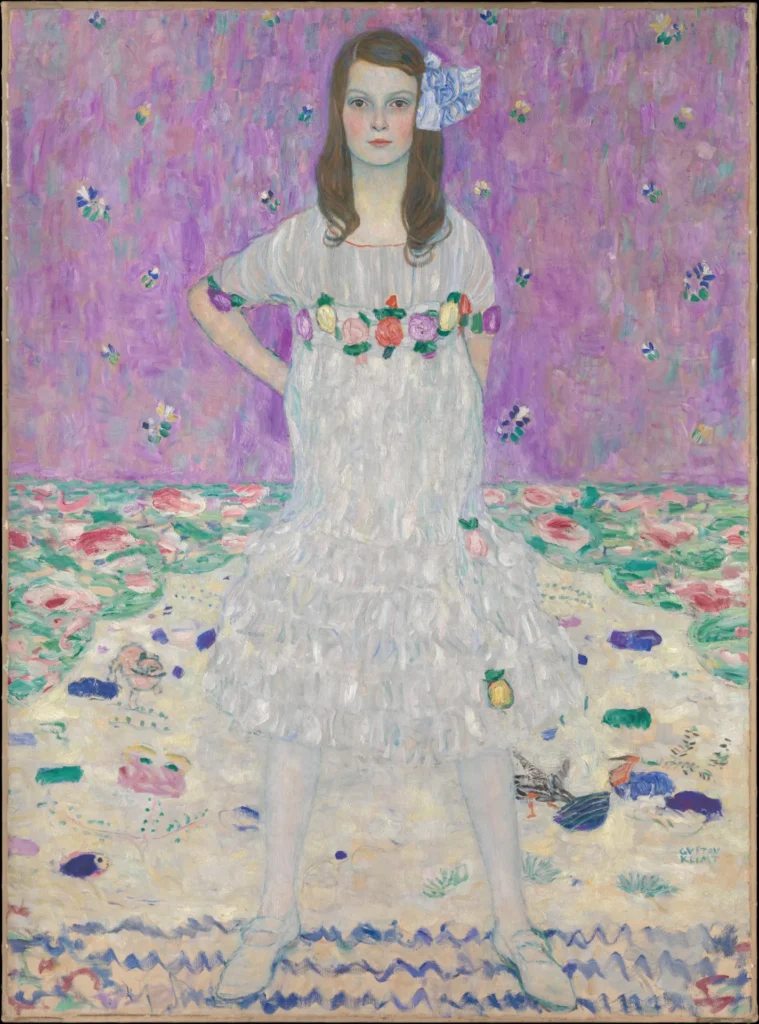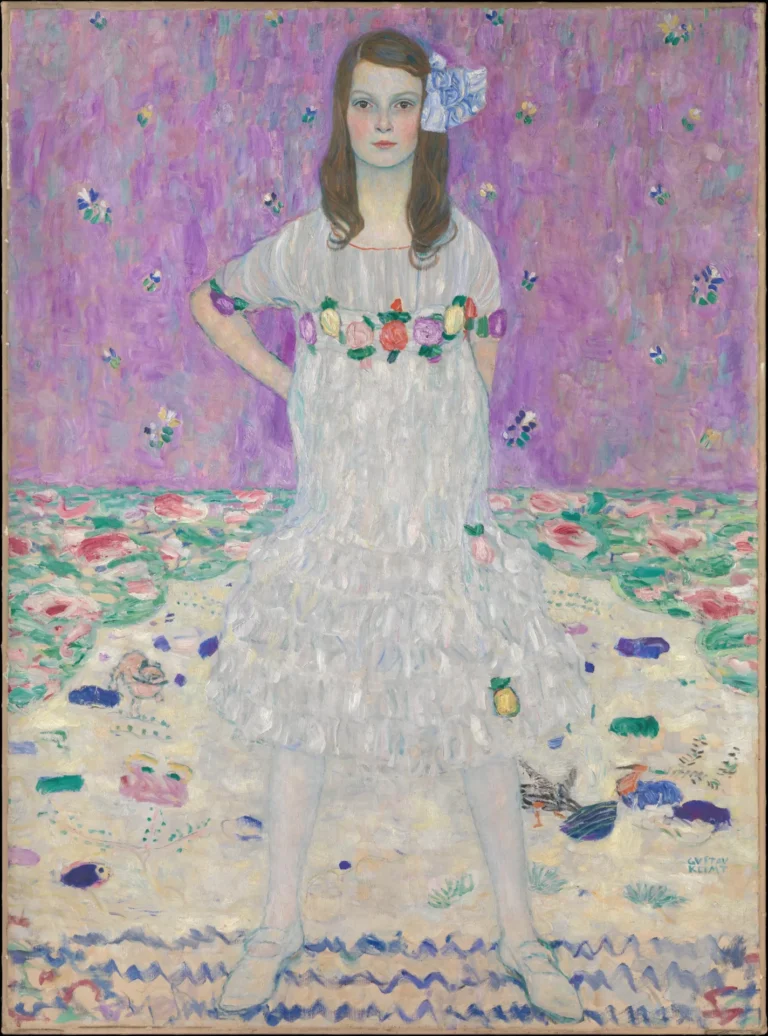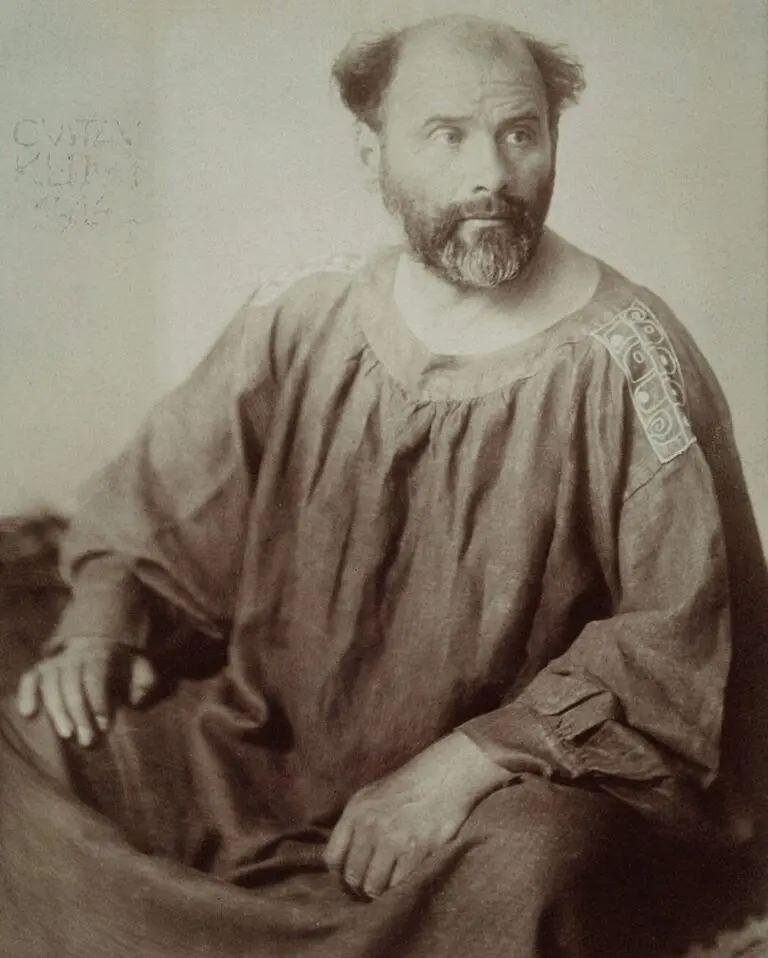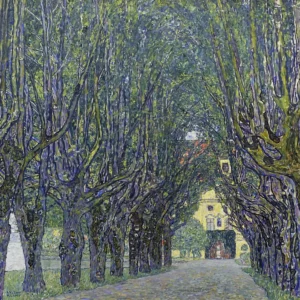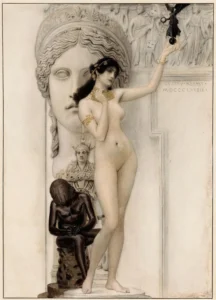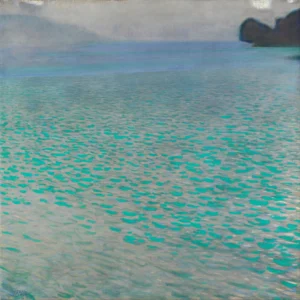Mäda Primavesi (1912–1913)
Created between 1912 and 1913, Gustav Klimt's portrait 'Mäda Primavesi' captures the confident young daughter of the influential Otto Primavesi. At just nine years old, Mäda poses with an unconventional stance that conveys her strong character. Detail-rich, the artwork showcases Klimt's evolving style, featuring a floral pattern background and vibrant clothing that reflect both modernity and the influence of East Asian art. Currently, the portrait is housed in The Metropolitan Museum of Art.
1912 - 1913
About the Artwork
Did You Know
Liked what you see? Add it to your collection.
Enjoyed reading? Share it.
... continued
Subject and Family
Mäda Primavesi was the daughter of Otto Primavesi, a wealthy businessman from Moravia, and his wife Eugenia Primavesi (née Butschek). The Primavesi family was known for their influential status and their support of the arts. Otto Primavesi was a financier of the Vienna Workshop (Wiener Werkstätte) and a close friend of the architect and designer Josef Hoffmann, who designed the family's country house.
Composition and Style
When Klimt painted Mäda, she was nine years old. The portrait is notable for its unconventional pose; Mäda stands facing the observer squarely, with her legs wide apart and her arms folded behind her back. This stance highlights her strong character and confident gaze, which was unusual for portraits of children at that time. The pose and expression give the portrait a modern and self-assured feel.
Influences and Details
Klimt's inspiration for this period had shifted from the heavily ornamented gold portraits of his earlier works to a more subdued use of patterns, influenced by his collection of Japanese prints and art books. The background of the portrait features a lilac-painted wall decorated with flowers, and Mäda stands on a green carpet with red floral motifs, including stylized figures such as a dog and fluttering birds, which reflect East Asian imagery.
Clothing and Accessories
Mäda is depicted wearing a white dress made of lawn, designed by Emilie Flöge at Klimt's suggestion. The dress includes a band of brightly colored roses at chest height, adding a touch of color. Her stockings, shoes, and the bow in her hair are all white.
Context and Other Works
During this time, Klimt was also commissioned to paint Mäda's mother, Eugenia Primavesi, between 1913 and 1914. The Primavesi family was a significant patron of Klimt's work, and they acquired several of his paintings over the years.
Current Location
The portrait 'Mäda Primavesi' is part of the collection at The Metropolitan Museum of Art, having been gifted by André and Clara Mertens in 1964.




